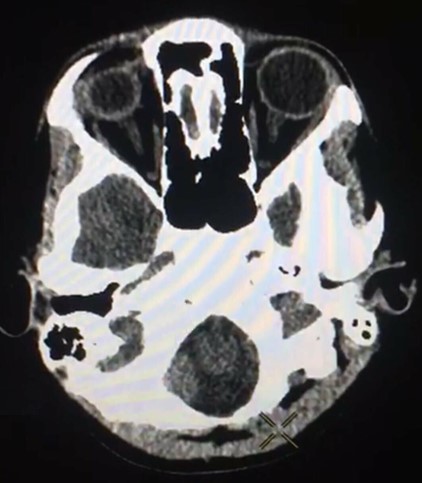Emergency Medicine and Trauma Care Journal
Case Report
Non-Traumatic Epidural Hemorrhage in a Sickle Cell Anemia Patient: A Rare Case
Alahmari A*
Department of Anatomy Radiology Specialist, King Saud university, Saudi Arabia
*Corresponding author: Abdulwahab Alahmari, Department of Anatomy Radiology Specialist, King Saud niversity, Saudi Arabia, Tel: +966549157485; Email: afaa99@hotmail.co.uk
Citation: Alahmari A (2019) Non-Traumatic Epidural Hemorrhage in a Sickle Cell Anemia Patient: A Rare Case. Emerg Med Truama: EMTCJ-1000015.
Received date: 01 October 2019; Accepted date: 15 October 2019; Published date: 23 October 2019
Abstract
An epidural hemorrhage usually comes as a result of traumatic brain injuries. In this case, a sickle cell anemia patient suffered from a non-traumatic epidural hemorrhage which is an abnormal finding for a pediatric patient.
Keywords: Non-Traumatic Epidural Hemorrhage; Sickle Cell Anemia; Traumatic brain injuries
Case Report
A thirteen-year-old male patient brought to the emergency room in King Fahad Central Hospitalunconscious. The vital signs were: a blood pressure reading of 110/89, with a pulse rate of 69 beats per minute, a respiratory rate of 14 breaths per minute, a temperature of 37.4°C, and an evaluation of 3/15 on the Conscious Glasgow Scale (GCS). The patient was complaining from a severe headache before coming to the hospital. There was no a previous history of trauma or any injury. A CT scan was requested for the patient which showed an epidural hemorrhage (EDH) see Figure 1 on the left side see Figure 2. The laboratory blood test for red blood cell count and hemoglobin S evaluation came positive for sickle cell anemia. The cause of the epidural bleeding was the sickle cell anemia (SCA) which is uncommon cause for EDH in pediatrics. The patient was admitted to surgery to stop the bleeding and to remove the clotted blood. After surgery, the patient recovered very fast. As well, sickle cell anemia medications were prescribed for the patient to reduce the pain, allow blood transfusion, and prevent complications.
Discussion
Any SCA patient who has this condition for a long time, it can lead to vascular complications. The SCA can affect both large and small size cerebral blood vessels [1]. Furthermore, SCA can be a contributing factor in forming an EDH [2].

Figure 1: (The 13-year-old male) A brain CT scan at the level of eyeballs showing the epidural hemorrhage on the left side.

Figure 2: Illustration of the location of the epidural hemorrhage compared with the normal-right- side.
Citation: Alahmari A (2019) Non-Traumatic Epidural Hemorrhage in a Sickle Cell Anemia Patient: A Rare Case. Emerg Med Truama: EMTCJ-1000015.